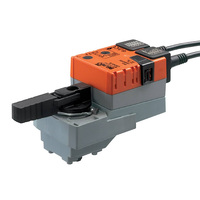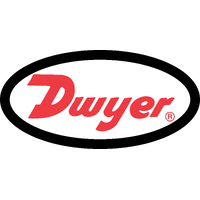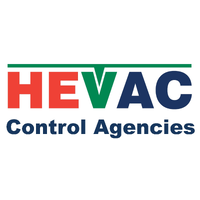What Is A Solenoid Valve?
If you're a building automation contractor, HVAC technician, or facilities manager working anywhere across Australia, you've likely run into solenoid valves. You'd typically find them in a chiller system, water supply line, or fuel tank setup. But when it’s time to repair or specify one, questions come up fast:
What is a solenoid valve? How does it work? What do all the configurations even mean?
A solenoid valve is an electrically controlled valve that opens or closes the flow of a liquid or gas in a system. It relies on a solenoid coil (an electric coil) to move an internal plunger that either allows or blocks flow. That’s the basic mechanism, one that powers thousands of fluid and gas control systems around the world.
And it doesn't matter what your automation process is, getting the solenoid valve type and pressure range right is critical for safety, energy efficiency, and uptime.
What Is the Purpose of a Solenoid Valve?
The core purpose of a solenoid valve is to automate fluid or gas control. Rather than manually turning valves on or off, solenoid valves allow systems to do this on schedule or in response to signals, like a temperature rise or a safety trigger. They’re essential for process control systems, safety shutdowns, precise dosing, and on-demand water or gas control.
What Is a Solenoid Valve Used For? Common Applications
Solenoid valves automate the flow of air, water, steam, oil, refrigerant, or inert gases using electrical signals.
Here’s a breakdown of where you’ll find them and why:
1. HVAC & Building Management Systems (BMS)
Solenoid valves are used to open or close chilled water loops, hot water coils, or DX refrigerant circuits based on system demand or thermostat signals.
- Example: In a typical large commercial HVAC plant, you’ll find 2-way or 3-way direct acting solenoid valves controlling chilled water to fan coil units. These valves are often made from brass or stainless steel and sized from ½” to 2” NPT ports.
- Used in: AHUs, FCUs, VAV boxes, boiler systems.
- Controls refrigerants like R-410A, R-134a, or glycol-water mixes.
- Often paired with BAS protocols like BACnet or Modbus for automation.
2. Irrigation & Agriculture (Commercial Scale)
In agriculture, solenoid valves automate water delivery in drip irrigation, sprinkler systems, and fertigation setups. These valves respond to controllers, soil sensors, or timers.
- A typical 24V AC solenoid valve can handle up to 800 kPa (116 psi) water pressure.
- Common in vineyards, turf farms, and commercial greenhouses across South Australia.
- Valve bodies are usually made of nylon or PVC, and operate on low-voltage control circuits to prevent power waste.
- Some models feature manual override in case of controller failure.
3. Medical, Laboratory & Pharmaceutical Equipment
Precision dosing, clean media flow, and fast shutoff are vital in medical and laboratory gear.
- Solenoid valves used in dialysis machines or blood analysers require high chemical resistance, often made with PTFE seals and 316 stainless steel valve bodies.
- They’re often normally closed, 2/2-way direct acting valves, allowing for zero minimum pressure differential operation.
- Applications: Oxygen concentrators, gas chromatographs, chemical wash cycles.
4. Compressed Air and Pneumatic Control Systems
In manufacturing and workshops, solenoid valves control compressed air lines, often managing energy cycles, actuator movement, or air tool control.
- Common in automotive workshops, CNC plants, and packaging lines.
- Uses 3/2-way or 5/2-way valves for actuating single or double-acting cylinders.
- Typical operating pressures: 0.2 MPa to 1.0 MPa (29–145 psi).
- Often housed in aluminium or zinc bodies for durability with fast switching speed under 20 ms.
5. Fuel Delivery, LPG, and Oil Burner Systems
These applications require solenoid valves rated for flammable liquids or gases such as diesel, petrol, LPG, or kerosene.
- In fuel stations or generators, valves are normally closed and open only when powered, providing fail-safe fuel shutoff.
- Flow rates may range from 10 to 80 L/min, depending on system size.
- Certified to meet EN161 or AS/NZS 5601 standards for gas safety.
- Some high-temp solenoid valves can withstand up to +180°C, ideal for oil burners.
6. General-Purpose Industrial Automation
General-purpose solenoid valves (usually 2/2-way direct acting or pilot operated types) are used where basic open/close control is needed.
Applications include:
- Dishwashing and laundry machines in commercial kitchens
- Bottle filling lines in beverage plants
- Chemical dosing in wastewater treatment
- Materials vary based on media: Viton seals for chemicals, EPDM for potable water, or NBR for oil-based fluids.
Important Note on General-Purpose Solenoid Valves
First, what is a general-purpose solenoid valve?
A general-purpose solenoid valve is an electromechanically operated valve designed to control the flow of liquids or gases in a wide range of everyday systems. It’s called general-purpose because it’s built for non-specialised, broad applications where there are no extreme operating conditions (like super high pressure, corrosive fluids, or sterile environments).
General-purpose solenoid valves are flexible and cost-effective, typically operating within:
- Pressure range: 0 to 10 bar
- Power ratings: 6W–20W
- Flow rate: Up to 25 L/min for small port sizes
- Most use brass or stainless steel valve bodies, with standard voltages of 12V DC, 24V DC, or 240V AC
However, they’re not suited for corrosive, high-viscosity, or high-temperature applications without specific materials and certifications.
How Does a Solenoid Valve Function?
At its core, a solenoid valve has three elements: a solenoid coil, a plunger, and a valve body. When electrical current energises the coil, the magnetic field lifts or lowers the plunger, which opens or closes the valve seat to control flow.
Let’s break down what that means in practice:
Open and Close Flow
Most solenoid valves are normally closed. That means when there’s no power, the valve blocks flow. Apply power, and the valve opens instantly, simple, fast, and reliable.
Control Flow Direction
Some solenoid valves are directional; they control not just whether fluid flows, but also where it flows. Think of them like traffic controllers in multi-port setups.
Control Flow Volume
By adjusting valve seat size, port configuration, or pressure differential, you can dial in how much fluid moves through the system. Some valves offer flow metering or variable flow options.
Regulate Flow Rate
Using a solenoid valve with pressure range settings and electronic controllers, you can regulate how quickly fluid flows. That’s useful in dosing applications or when dealing with pressure-sensitive equipment.
Components That Make Up a Solenoid Valve
Solenoid valves aren’t one-size-fits-all. Their internal architecture determines how they behave, where they’re useful, and how much pressure they can handle. Here are key features to understand:
Normally Closed vs. Normally Open
- Normally Closed (NC): Default state blocks flow. Opens when powered.
- Normally Open (NO): Default state allows flow. Closes when powered.
Both are used depending on safety and process needs; NC is most common.
Direct Acting vs. Pilot Operated (2-Stage) Solenoid Valves
- Direct acting valves use the solenoid to move the valve plunger directly. Ideal for low-pressure or zero-pressure systems.
- Pilot-operated valves rely on fluid pressure to assist in opening the valve, enabling them to handle higher flows and larger orifices with lower coil power consumption. They do, however, require a minimum pressure differential to function.
Pressure Assist to Open vs. Pressure Assist to Close
- Some valves use inlet pressure to help pop the valve open, useful in high-pressure setups.
- Others close faster using spring-loaded or pressure-assisted mechanisms for quick shut-off.
Single Coil vs. Multiple Coils
Dual-coil or multiple-solenoid valves enable bidirectional control or enhanced responsiveness. Useful in complex automation sequences or rapid cycling systems.
Conventional vs. Latching Solenoids
- Conventional solenoids need constant power to stay open or closed.
Latching solenoids use a brief pulse to change state and then remain in that state, saving power consumption and making them ideal for battery-powered or remote systems.
Frequently Asked Questions
How much does it cost to replace a solenoid valve?
In Australia, a general-purpose solenoid valve typically ranges from $50 to $300+, depending on size, valve body material (e.g., stainless steel vs brass), seal material, and pressure rating. Custom or high-pressure versions may cost more, especially if special approvals (WRAS, ATEX) are required.
What happens when a solenoid valve goes bad?
A faulty solenoid valve may get stuck in the open or closed position, cause pressure loss, or trigger inconsistent system behaviour. Common signs include overheating coils, erratic flow, or humming noises. If you ever need a replacement, you can browse stocked solenoid valves from trusted global brands at Controls Traders.
Can a solenoid valve work with high-pressure systems?
Yes, but it depends on the pressure rating and construction. Pilot-operated valves are generally preferred for high-pressure applications, as they require less coil force. Always check the minimum pressure differential and verify it matches your system’s specs.
How do I choose between a direct-acting solenoid valve and a pilot-operated one?
Go with direct acting valves when dealing with low pressure or no pressure differential, like in tank drain systems or vacuum lines. Use pilot-operated valves when you have sufficient line pressure and need to handle higher flow volumes.
Still Unsure Which Solenoid Valve to Choose?
Whether you’re looking for a normally closed, direct-acting, or pilot-operated solenoid valve for your automation setup, choosing the right type can be challenging. That’s where Controls Traders can help.
We stock right thanks to our over 40 years of combined HVAC and automation expertise. You can browse by product or explore by brand. If you need someone to talk to, call us on 1300 740 140 or send a message and we will get back to you.
Leave a comment
Popular Posts

How to Size a Valve Actuator for Chilled-Water Coils

Belimo vs. Siemens Actuators: Comparison & Buying Guide

What Is A Solenoid Valve?





























